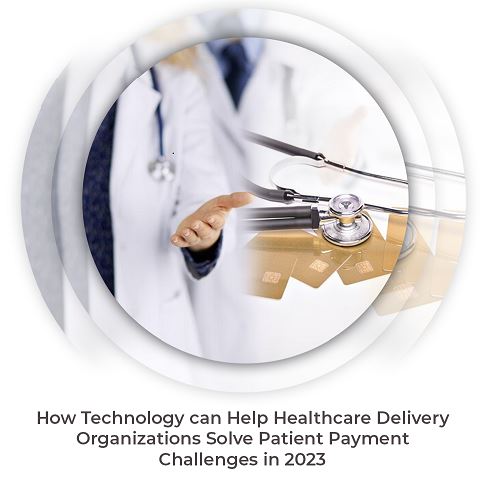
@ShahidNShah


With the healthcare industry’s rising needs, it’s no surprise that hospitals are confronting difficulties. Healthcare organizations are taking steps to address issues and provide top-notch services, from researching health concerns to protecting patient privacy. This has been made feasible by developing cutting-edge technologies that have allowed us to get around some of these challenges.
Healthcare technology has the potential to radically change how the sector functions for both patients and healthcare workers. Globally, healthcare systems use artificial intelligence (AI), machine learning (ML), and data science to improve outcomes. National health expenditures in the United States are anticipated to surpass $6.2 trillion by 2028. Even though there are still substantial challenges to overcome, there is hope that technology will be able to assist.
Looking ahead to 2023 and beyond, let’s look at major concerns confronting the healthcare industry and how you can cope.
Invoicing and Payment Processing
As patients are paying for a growing percentage of their medical bills, medical practices are listing patient collections as their most significant revenue cycle management challenge. Providers must respect patient payment preferences to encourage patients to submit payments on time.
Make sure billing statements are user-friendly for patients to satisfy their expectations and enhance the patient experience. You should use the most recent payment innovations, including Apple Pay and text-to-pay, and provide paperless statements (eStatements) and a range of patient payment collection alternatives (e.g., eCheck, credit card, etc.) via an online patient portal. Reminders sent via text or email are new features that improve communication with patient collections and motivate them to fulfill their financial commitments.
However, setting up such invoicing and payment processing systems internally for medical clinics is frequently tricky and expensive. In addition to developing the necessary infrastructure (such as a secure payment processing system and patient balance collection portal) and negotiating terms with each payment processor, they also need to cover the ongoing administrative costs associated with maintaining these technologies.
Additionally, to protect patient collection information, healthcare professionals must adhere to tight regulations. Your patient payment collection interface and processing system must be entirely compliant for you to avoid paying a hefty fine.
Any supplier can offer the newest digital statement and payment technologies without expending excessive financial and personal resources by cooperating with a HITRUST Certified partner who offers cloud-based billing functionalities.
Price Transparency
Along with a lack of patient payment choices, confusion brought on by transparent pricing is another major deterrent for patients not paying their medical bills. In reality, the CMS has enacted a new rule forcing hospitals to publish the costs they agree to with insurance for specific medical procedures as of January 1st, 2021.
While some healthcare systems are choosing to make their service costs available, most are still not doing so. This results in benefits like a decrease in patient collection uncertainty and surprise billing concerns. Only 16% of hospitals are compliant as of August 2022, up from 14.6% in February 2022.
Health systems that do not comply risk paying significant fines. A hospital in Georgia was fined $833,180 for disobeying CMS’s initial warning. Providers frequently struggle with additional compliance aspects, such as questions regarding price, data integrity, and available pricing tools.
Even while legislation governing price transparency is still complex, today’s tech-savvy patients look up pricing before scheduling a doctor’s visit. Any provider that does not disclose its pricing may be disqualified entirely.
Effective Payment Model
Financial incentives are increasingly based on patient collection outcomes rather than service quantity to lower costs and improve service quality.
New payment models that encourage healthcare providers to coordinate services and advance preventative care are in high demand from payers and patients. Examples include bundled payments, payments made to providers of patient-centered care, global payments, and shared savings.
However, there are numerous difficulties in putting these new models into practice and in keeping track of the procedures inside the current systems. For instance, it’s necessary to create new measures to gauge performance and ROI.
Healthcare professionals should closely monitor the evolution of this trend. In order to determine the most effective ways to save costs and enhance patient collection outcomes while maintaining profitability, look to early adopters and major organizations (such as Medicaid) that are testing and fine-tuning these new patient payment collection methods.
Patient Experience
In recent years, there have been some substantial changes in the medical insurance environment. As more patients are liable for a larger percentage of their healthcare expenditures, the patient balance collection experience is likely to improve.
In order to draw and keep patients, healthcare organizations will have to compete more fiercely with other industries’ consumer brands for their business. Patients today seek experiences that are on par with those offered by other businesses.
A “self-service” method for handling the majority of queries, problems, or worries (such as downloading an immunization record, scheduling an appointment, paying their bills, or checking their account/insurance status) at any time or place that is most convenient for them is one of the expectations for new patients.
What is the Future of Technology in Healthcare – Bright!
The healthcare sector has advanced significantly, and this is undeniable, given how important technology is to it. From addressing data overload across numerous institutions to linking doctors and patients from opposite ends of the globe via mobile apps, healthcare technology continues to move in the right direction.
In terms of what mobile apps, cloud-based services, and other digital assets have to offer healthcare practitioners, we might only be seeing the very top of the iceberg right now. The future of healthcare is predicted to be marked by a greater emphasis on digital transformation, which will present both patients and physicians with exciting new career options.
About AnodynePay
AnodynePay is a prominent provider of healthcare billing and collection services. It can connect to your current EHR systems and provide its services without additional IT infrastructure. Our group of qualified specialists includes subject matter experts in patient satisfaction. We make sure that our clients get the results they require within the allotted time.
Continue reading at healthcareguys.com

Jane Courteny holds a Ph.D. in psychology. She is passionate about helping people understand the patient and their behavior with regard to payment in healthcare through her easily digestible materials. You can find her reading on the beach or hiking up a mountain.
As medical practitioners, physicians have the responsibility of providing top-notch patient care and also making sure their billing is accurate and efficient. But unfortunately, errors in dermatology …
Connecting innovation decision makers to authoritative information, institutions, people and insights.
Medigy accurately delivers healthcare and technology information, news and insight from around the world.
Medigy surfaces the world's best crowdsourced health tech offerings with social interactions and peer reviews.
© 2024 Netspective Media LLC. All Rights Reserved.
Built on Apr 29, 2024 at 4:03am